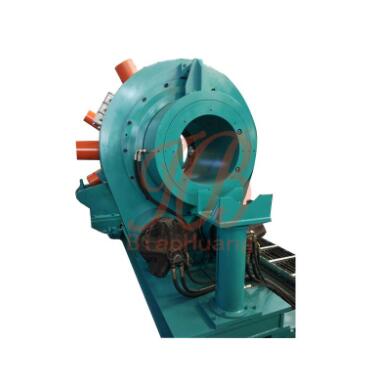In the demanding world of oil and gas extraction, where precision, safety, and durability are critical, the bucking unit plays an indispensable role. But what exactly is a bucking unit, and why is it so essential in this industry?
A bucking unit is specialized equipment designed to make and break connections between tubular components such as pipes, casing, and tubing. By applying precise torque, it ensures these connections are secure, reliable, and capable of withstanding the extreme conditions encountered during drilling operations.
Key components of a bucking unit include:
Headstock: Where torque is applied to tighten or loosen connections.
Spindle: Holds and stabilizes the tubulars during operation.
Tailstock: Provides support along the length of the pipes, ensuring alignment and safety throughout the process.
Bucking units are available in several types, each tailored to meet specific operational requirements:
Hydraulic Bucking Units: Renowned for their high torque capabilities, these units are ideal for large-scale operations that demand powerful and consistent performance.
Mechanical Bucking Units: Valued for their simplicity and ease of maintenance, mechanical units are reliable workhorses for many standard drilling applications.
Portable Bucking Units: Designed for mobility, these units are perfect for field operations where equipment needs to be easily transported and deployed.

The operation of a bucking machine involves a precise sequence designed to handle tubular connections safely and efficiently. First, the unit clamps securely onto a section of the pipe. Then, controlled either manually or through an automated system, it applies a pre-set torque to tighten or loosen the joint. Sensors monitor the process in real-time, ensuring accuracy and preventing over-tightening or damage to the connections.
Bucking units play a critical role throughout the lifecycle of drilling operations. They are essential both during the assembly of drilling equipment and in maintenance tasks, providing fast, precise handling of pipe connections. By ensuring joints are securely tightened or efficiently loosened, bucking units help streamline operations, reduce downtime, and improve overall drilling efficiency.
Bucking units offer several key advantages in oil and gas operations:
Efficiency: They drastically reduce the time needed to make or break tubular connections, speeding up drilling and maintenance processes.
Accuracy: Advanced calibration ensures that every connection meets precise specifications, which is critical for maintaining the integrity and safety of the well.
Safety: By minimizing manual handling of heavy pipes and equipment, bucking units significantly lower the risk of on-site injuries, creating a safer working environment.
Selecting the right bucking unit requires careful consideration of several key factors:
Capacity: Ensure the unit can handle the full range of tubular sizes used in your operations, from smaller pipes to heavy-duty casings.
Compatibility: The unit should integrate seamlessly with your existing equipment and workflow, avoiding operational bottlenecks.
Durability: Given the demanding conditions of oil and gas operations, the unit must be robust, reliable, and built to withstand continuous use in harsh environments.
Recent technological advancements have transformed bucking units, incorporating automation and robotics to enhance precision and reduce the risk of human error. Modern units also feature real-time data monitoring, enabling predictive maintenance and improving overall operational efficiency. These innovations make bucking units smarter, safer, and more reliable than ever before.
Despite their many advantages, bucking units come with certain challenges. Mechanical failures and the need for regular maintenance can lead to downtime if not managed properly. Additionally, proper operator training is essential to ensure safe, effective, and efficient use of the equipment.
Real-world case studies demonstrate the value of bucking units in major oil and gas projects. These examples highlight significant improvements in operational efficiency, reduced downtime, and measurable time savings, underscoring the importance of integrating bucking units into modern drilling operations.
The future of bucking units is being shaped by continued advancements in automation and artificial intelligence. Emerging technologies aim to enable predictive maintenance, real-time operational adjustments, and smarter torque control, further improving efficiency, safety, and reliability in oil and gas operations.
When investing in a bucking unit, choose a reputable supplier that offers comprehensive after-sales support. Professional installation is essential to ensure the unit operates safely, meets industry standards, and integrates smoothly into your workflow.
Routine maintenance is key to maximizing the longevity and performance of bucking units. Regular inspections, timely replacement of worn parts, and addressing common mechanical issues promptly help prevent downtime and maintain operational efficiency. Proper training for operators also ensures safe and effective use of the equipment.
Compliance with industry regulations and safety standards is essential when using bucking units. These machines must meet specific certifications to guarantee safe operation in the demanding environments of the oil and gas sector. Adhering to these standards helps protect personnel, equipment, and overall project integrity.
Bucking systems are a vital component of oil and gas operations, improving both efficiency and safety in handling tubular connections. With ongoing technological advancements, including automation and AI integration, their role is set to become even more critical. Investing in the right bucking unit ensures operational reliability, reduces downtime, and positions your operation for long-term success in an increasingly complex industry.

Comments
0